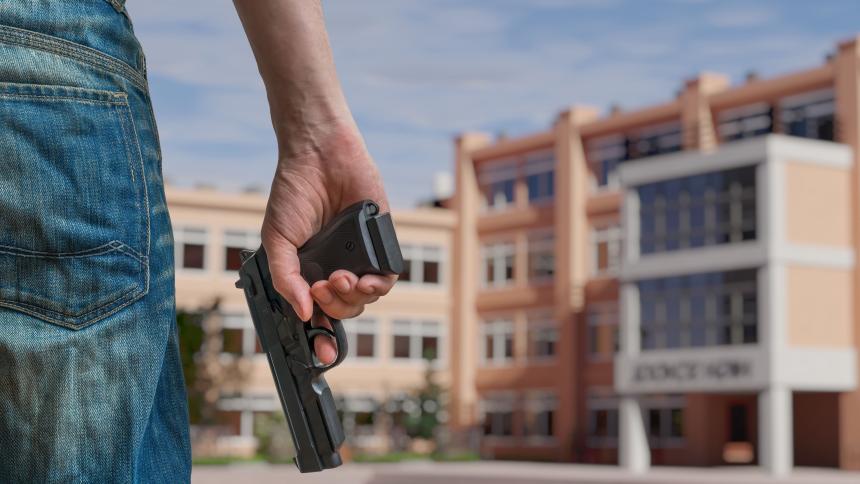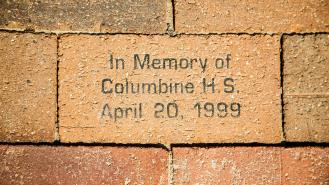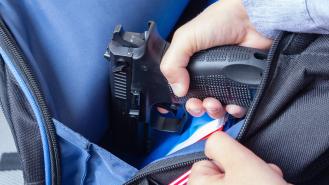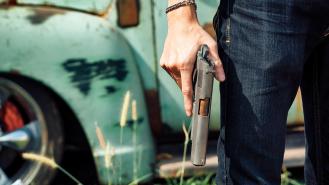
The Columbine massacre: What really happened?
The Columbine massacre is more than merely notorious. In the decades since teenagers Eric Harris and Dylan Klebold shot 13 people dead at their school, the event has inspired reams of journalism, endless internet debates, starry-eyed fan fiction, and even a tasteless computer game.
To cut through the noise, myths, and misinformation, it’s useful to probe some key questions about what happened at Columbine High School on 20th April 1999.
Was Columbine intended to be a mass shooting?
Some people don’t know that the world’s most infamous mass shooting, which went on to serve as inspiration for other atrocities like Virginia Tech in 2007 and Sandy Hook in 2012, was primarily intended to be a bombing.
Maximum devastation was the aim of Harris and Klebold. With that in mind, they placed bags containing propane bombs in the school cafeteria that fateful morning. The idea was to utterly destroy the school building, taking many hundreds of lives in an instant, then wait outside with their guns to pick off any survivors as they fled the scene. They only reverted to Plan B of walking around the school, randomly shooting people, when the bombs failed to explode.
Were Harris and Klebold in the Trenchcoat Mafia?
In the immediate aftermath of the massacre, it was alleged that Harris and Klebold were part of a clique of misfits and goths known as the Trenchcoat Mafia. The group was reportedly obsessed with the occult, Adolf Hitler and Marilyn Manson.
This led to a national moral panic over what the Washington Post described as “the morose subculture of Gothic fantasy”. Politicians decried the alleged malevolent influence of Manson and similar musicians, and a British tabloid ran the headline “Killers Worshipped Rock Freak Manson”.
There was indeed a group of Columbine students known as the Trenchcoat Mafia, who had a penchant for dark clothes and were widely ridiculed as the “weird kids”. The extent of Harris and Klebold’s involvement in the group is debatable. According to some, including Harris’ own father, the Columbine killers had indeed been formal members of the group, but others have insisted they were merely on the fringes.
Marilyn Manson certainly had no special significance for them, although both were fans of dark rock/metal/industrial bands like Rammstein and KMFDM. The latter actually released an album called Adios on the very day of the massacre, a fact that Eric Harris noted in his journal as “appropriate, a subliminal final ‘Adios’ tribute to Reb and Vodka” (the two killer’s nicknames).
Was the massacre revenge for being bullied?
Did Harris and Klebold violently snap after being picked on at school? This has long been a popular interpretation of events, with numerous online “Columbiners” re-framing the killers as misfit martyrs: the heroically doomed figureheads for sensitive outcasts everywhere.
Some experts, including Dave Cullen, author of the bestselling book Columbine, have downplayed the significance of bullying as a trigger, putting more focus on their general nihilism and hatred for the world.
“Their slaughter was aimed at students and teachers, but it was not motivated by resentment of them in particular,” Cullen wrote in a seminal article on the event. “Students and teachers were just convenient quarry.”
It’s certainly true that Eric Harris’ journal entries contain fantasies of indiscriminate, nihilistic violence. “Keep this in mind, I want to burn the world,”
It’s also been pointed out that, rather than being stereotypically introverted outcasts, both Harris and Klebold did have friends. Klebold even went to the school prom with a date, just days before the rampage. What’s more, the pair were reportedly occasional bullies themselves, with a fellow student later saying that Klebold was known for pushing people around in gym class. He was also reported to school authorities for bullying a disabled student.
However, many other commentators believe that bullying did indeed propel the killers on their horrific path. In his book Comprehending Columbine, Ralph W. Larkin details the ruthless status hierarchy at the school, the “extreme polarization” between the popular jock class and the outcasts, and a toxic culture of widespread bullying.
He also describes an incident where “Harris and Klebold were surrounded by a large group of football players in the cafeteria and squirted with ketchup.” According to an eyewitness, “That happened while teachers watched. They couldn’t fight back. They wore the ketchup all day and went home covered in it.”
Numerous other statements confirm the boys were ruthlessly picked on by other students, even having glass bottles thrown at them by teenagers driving by in their cars. Harris explicitly wrote in his journal “everyone is always making fun of me because of how I look… well I get you all back, ultimate f****** revenge here.”
It’s worth noting that, during the rampage itself, the pair yelled “This is for what you did to us” and “This is payback”.
Was Harris the leader and Klebold the follower?
A widely-accepted take on Columbine is that Harris was the malevolent mastermind while Klebold was his depressed and suicidal follower. Columbine author Dave Cullen has described Harris as an empathy-free psychopath with a “messianic-grade superiority complex, out to punish the entire human race for its appalling inferiority”, and there is undeniably a marked difference in tone between the killers’ journals.
Harris pours bile onto the page, praising Hitler and wallowing in his general hatred for humanity. Klebold’s writings are more wistful and philosophical, strewn with doodles of love hearts and gushing declarations of passion for various girls. Klebold was also more well-liked on a superficial level, with many peers and family friends expressing complete disbelief when he turned out to be one of the killers. By contrast, when news of the massacre broke, Harris’ own father called 911 saying he guessed his son was one of the perpetrators.
However, many have taken issue with this hypothesis. It’s been pointed out that, far from being a meek follower of Harris, Klebold seems to have been the one who first dreamt up the massacre. In a journal entry from early 1998, Klebold imagines going NBK (Natural Born Killers) with a partner who isn’t Harris, implying the rampage was his own long-imagined desire.
Secret videotapes made by the killers in the lead-up to the attack, known as the “Basement Tapes”, further complicate the picture. Harris exhibits signs of regret and anguish, weeping on camera about the friends he’ll miss, apologises at length to his loved ones, and mentions that he’s forcing himself to spend less time with his family so “this won’t be harder to do”. This seems to undercut the idea of Harris being a cold, emotionally detached psychopath.
Klebold appears to be less morose and more matter-of-fact in the “Basement Tapes”. During the massacre itself, Klebold was excitable and sadistic. When one victim pleaded for help, Klebold said “Sure, I’ll help you”, before shooting him in the face. He also mockingly asked a terrified girl whether she believed in God.
The key takeaway is that Harris and Klebold cannot be neatly categorised as types. Both were ultimately culpable for the landmark atrocity, and Columbine still defies easy explanations, all these years later.









